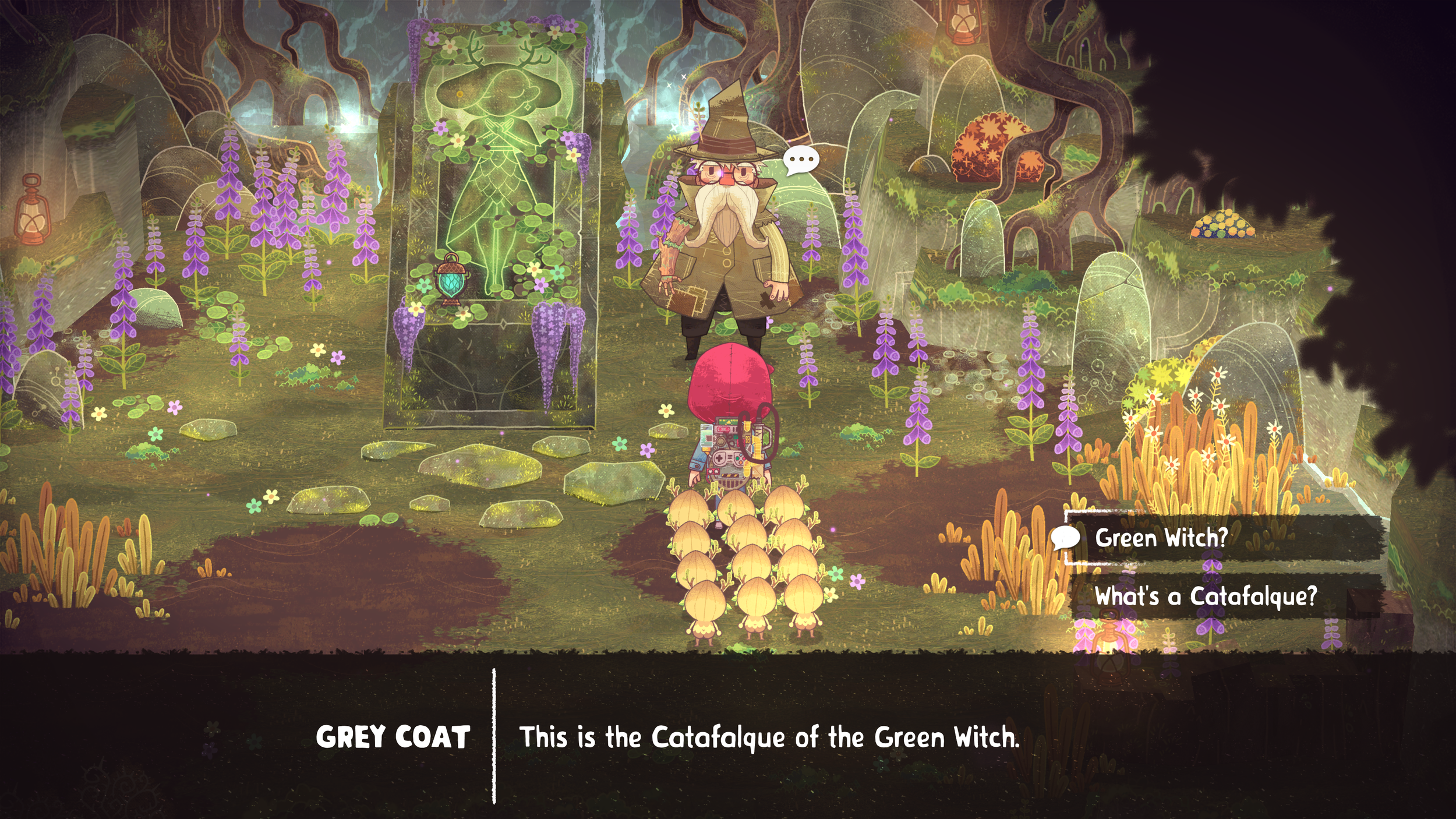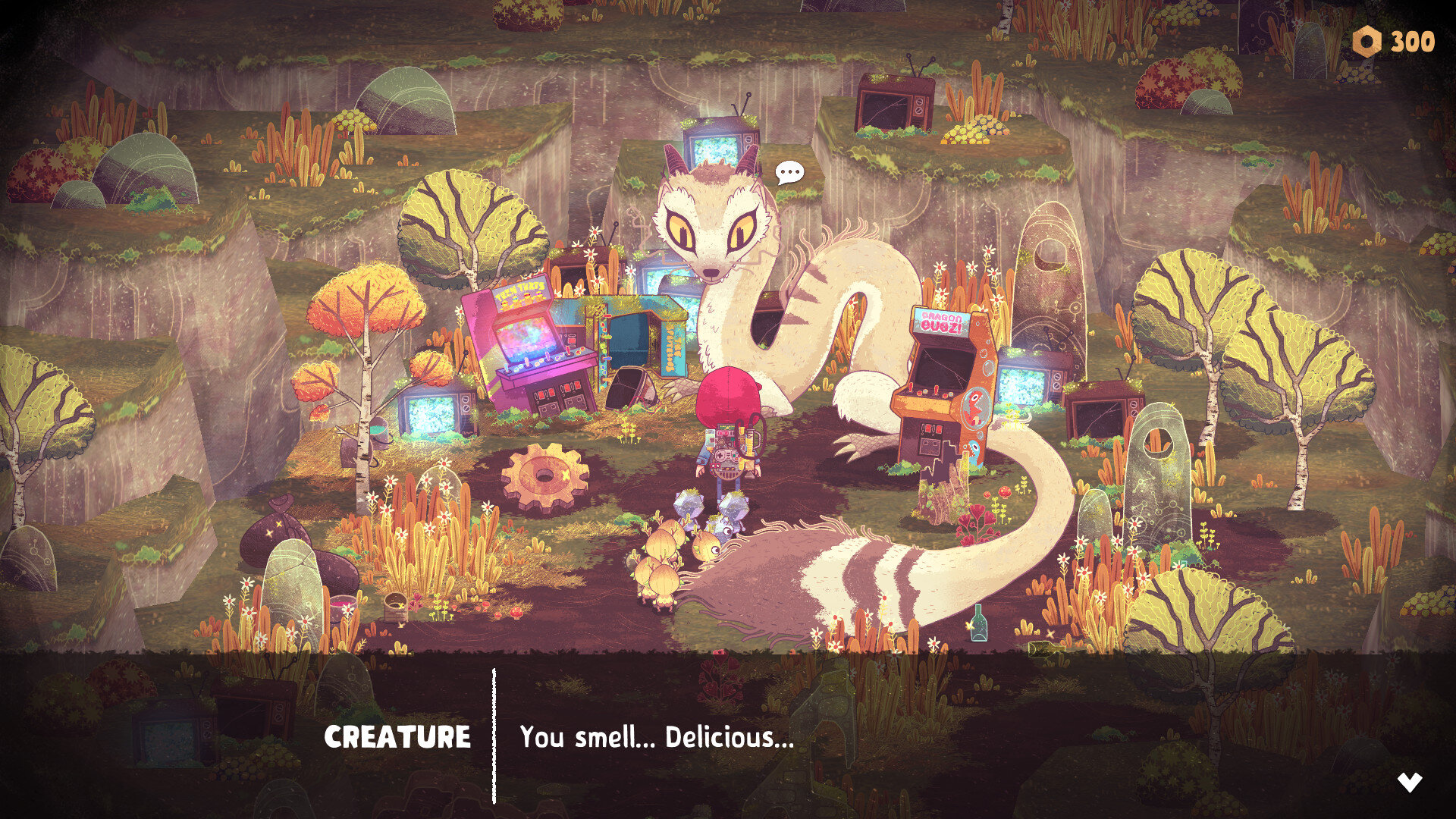The Wild at Heart
Blake Reno, Contributing Editor
I was nine years old when the GameCube was released. Two of its flagship release titles, Luigi’s Mansion and Pikmin, remain games that I recall fondly. While Nintendo continues to release new games in the Luigi’s Mansion series, Pikmin has sadly been put on the company’s back burner. Disregarding Hey! Pikmin, with its almost complete departure from the 3 mainline games in the series, it’s been nearly eight years since Pikmin 3’s initial release. Sometimes, a huge developer like Nintendo doesn’t seem interested in filling a niche they created within the market, leaving it to an indie developer to fill the gap.
Enter The Wild at Heart (TWaH). Wake, the initial player-character, runs away to the woods as an escape from a dysfunctional father (the details of this relationship are dripped out in playable dream sequences during Wake’s sleep). Wake’s escape into the woods at age 12 reminds me of my own escape into Luigi’s Mansion and Pikmin in my own childhood. And The Wild at Heart takes much of its gameplay from combining those two games. It combines Pikmin’s real-time strategy and puzzle elements and Luigi’s Mansion’s environmental interactions, along with a simplified version of Breath of the Wild’s crafting system, to create a unique experience that’s truly charmed me.
Pikmin is the most obvious influence on TWaH, giving you two characters who can control a small army of plant-like beings called Spritelings. These creatures fight battles, solve puzzles, and collect resources. However, TWaH is more focused on pure exploration and discovery than Pikmin. Whereas Pikmin uses the ticking time of daylight to push you to get everything you can done in one in-game day before you have to start back at the beginning, TWaH takes a lot of the pressure off by placing campsites (safe zones where you can save, heal, craft, and advance to the next day) and fast-travel points over the entire map. In addition, TWaH has the player exploring one large forest separated by loading zones instead of an entire planet divided into particular areas as in Pikmin.
The Luigi’s Mansion influence is felt in how Wake wields a vacuum to interact with the environment. In both games, vacuuming particular objects grants you resources: money in LM, scrap (essentially, currency) in TWaH. In the later LM games and in TWaH, this currency grants you upgrades. In TWaH, these include things like longer duration for the turbo vacuum, more health, and more inventory slots. The vacuum’s also used to solve puzzles in the game. For example, there are times where Wake must use the vacuum to make a pinwheel spin in order to open a gate.
While these influences are impossible to miss, TWaH absolutely feels like its own game instead of derivative. First, the game’s story is emotional and gripping. The sparseness of knowledge with regards to why Wake ran away from home (and why his friend Kirby joins him in his escape) adds another reason to push forward. Wake’s departure from his home has something to do with his father. In Wake’s dreams, you control Wake, and the game makes you approach Wake’s dad sitting on a couch facing away from you. Once you get close enough, Wake’s dad begins to mourn Wake’s mother, whose whereabouts are unknown to the player. This moving yet obscure scene gave me an immediate connection to Wake’s story.
Second, although some of the puzzle mechanics and Spriteling types are directly copied from Pikmin, TWaH emphasizes combining the abilities of Wake and Kirby with those of the Spritelings to discover new territories and items, rather than emphasizing combat or time management. I only feel the pressure of time in TWaH as daylight dwindles, the night spawning an invincible enemy that pursues Wake and Kirby. Even then, all I have to do is make it to one of the fast-travel points or campsites to be safe (and there are plenty of both). This contrasts with Pikmin when one wrong move or not getting everything done before night can cost you an entire in-game day or the lives of numerous Pikmin.
There’s something to be said for a game that doesn’t try to hide its influences but instead creates something new by reworking its predecessors. The Wild at Heart doesn’t surpass its influences, and that’s okay, because instead it creates something new: something more charming, emotional, and more relaxing.







